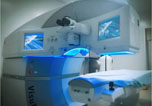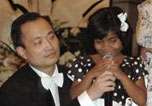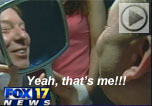- Over 55,000 LASIK and cataract procedures (including on over 4,000 doctors)
- The FIRST center in TN to offer Laser Cataract Surgery
- Introduced bladeless all-laser LASIK to the state
- Implanted the state's first FOREVER YOUNG™ Lens
- The first surgeons in the US to perform a new Intacs surgery to treat keratoconus
- Helped patients from 40 states and 55 countries
- International referral center for cataract surgery and LASIK complications
- Read Dr. Wang's book: LASIK Vision Correction
Why did you decide to have LASIK? Why did you choose Dr. Wang? How has your life changed since your LASIK procedure?
What is your advice for people considering LASIK?
Click to read more
Chapter OneRefractive Surgery: What Is It?The world of ophthalmology is one of the fastest evolving fields of medicine. Never before have so many new techniques and scientific breakthroughs been brought before the public in such a short period of time. LASIK and the introduction of implantable lenses now offer millions of people the opportunity to see without the use of glasses or contacts. The media are filled with amazing stories about laser eye surgery and how it painlessly corrects vision. What is LASIK, this marvelous new laser eye procedure? Is this ultramodern eye surgery really safe? How do I know if I'm a good candidate? Who should perform the surgery? This book is designed to help you answer all of these questions. Refractive Surgery Refraction: This word as it relates to vision has to do with the ability of our eye to refract (bend) rays of light. In order to see clearly, light that enters the eye must be bent in such a way that it is focused on the retina (the back surface of the eye). If the light is not bent properly and is focused instead in front of or behind the retina, then we will not see clearly, and what we have is a refractive error. Refractive surgery is any surgical technique or procedure that may safely be used to help the eye bend the light rays properly and restore clear vision. Refractive Surgical Procedures The most common refractive surgical procedures performed today are
New refractive procedures currently under investigation by the FDA include
The names of these procedures may be hard to pronounce, but the results in correcting poor vision due to refractive errors have been excellent. The high rates of success reported with these procedures--and LASIK in particular--have lead to their widespread acceptance within the ophthalmologic community. Which procedure is right for you depends on multiple variables, all of which will be presented in this book. The increasing number of refractive procedures developing throughout the world is testimony to the magnitude of the problem. The development of a laser procedure to correct nearsightedness, farsightedness, and astigmatism that is both predictable and safe was prolonged, in part, by the vastness of the problem. In some parts of the world, the incidence of nearsightedness is close to fifty percent. In the United States alone, as many as seventy million people are believed to be afflicted with myopia. Additional estimates by the National Institutes of Health report that as many as one adult in four suffers from myopia. While there are many types of refractive surgery, this book focuses primarily on LASIK, which is performed with the excimer laser. This procedure has proved to be highly effective and safe for most ranges of nearsightedness and farsightedness and is readily accepted by ophthalmologists today. |
If you're interested in bladelessLASIK, choose experience and technology. Choose Wang Vision 3D Cataract and LASIK Center of Nashville, Tennessee. Call (615)321-8881 or email us today.
Our new texbooks
A 501c(3) charity that has helped patients from over 40 states in the US and 55 countries, with all sight restoration surgeries performed free-of-charge.




















